|
Monday, April 20, 2015
Candy Encyclopedia: The Difference Between Gummi and Jelly
But there are some terms which have become so generic, they’re losing their meaning. I want to correct that course, or at least clarify how the terms are used on Candy Blog. There is a wonderful, and rather recent invention called the Gummi Candy. It was innovated in the 1920s in Germany and popularized by the Haribo Gold Bear. Once these unique candies became popular in the United States, they expanded into a very broad and diverse candy category. A gummi has a base of gelatin. Gelatin is often bandied about has a horrifying ingredient in viral listicles to unsuspecting people who apparently have never read a list of what’s in their food before. Gelatin is a protein. It’s most often made from pork sources, found in the connective tissues (knuckles, hooves, as well as skin), but it’s also made from bovine or fish sources to create a Kosher/Halal version. Gelatin simply cannot be vegetarian. The protein of gelatin is amazing, it creates a translucent, flavorless base with an inimitable texture. I call it bouncy. Many gummi candies are fat free, or have nominal amounts of fat, so they’re very low in calories per ounce. Often jelly candies are categorized as gummis, because they are also colorful, translucent and fruit flavored. However, a jelly candy is somewhat different. Jelly candies are solidified using carbohydrates, not proteins. So, a jelly bean center is usually made with corn starch. Other jelling ingredients are pectin, tapioca, potato or arrowroot starch. Gums are also used sometimes to jell candy, which is how the original gumdrops were made, with gum arabic, mastic or gum tragacanth. Now, I have nothing against jelly candies, but you probably already innately know the different between a Swedish Fish and a Gummi Worm. There’s a substantial different to the texture. The easiest way to tell the difference, without even putting a candy in your mouth, is to pull it apart. When you pull a Swedish Fish or Spearmint Leaf apart, it’s pretty easy. What you see when you look closely at the spot where it splits is that it creates little strings at the separation. The softer the candy, the more stringy it will be. It’s generally sticky, as in, it will stick to you, your fingers, the package, whatever. When you pull a gummi apart, you’ll get a lot of stretch, but eventually it will break. So the edges of a gummi will usually be flat, a full clean break. Though the broken surface will be sticky, the strength of the gummi means that it is unlikely to transfer to your fingers or pockets. I prefer to use the original German word for the candy, gummi, instead of gummy. Since gummy already means something in English which is not necessarily descriptive of actual gummis, it’s easier to just keep them as separate names. However, here on the blog I used the name of the candy if it happens to be Gummy or Gummies. Gummis are unique enough they shouldn’t be lumped in with jelly candies, no more than compressed dextrose and chocolate should be, just because they’re basically solids at room temperature. Though there have been attempts to make vegan or vegetarian gummis, there really isn’t anything quite like gelatin in the plant world. So, you may find marshmallows made with agar agar, but they’ll never be quite the same as gelatin marshmallows. For some candies that use gelatin, such as Mentos, they were able to swap out the gelatin in the chewy mints for gellan gum, which is made from bacteria. Perhaps scientists will be able to synthesize a protein from plants someday, but in the interim, there’s nothing wrong with omnivores making some fun confections by utilizing all parts of the animals we raise for food. Related Candies
POSTED BY Cybele AT 2:50 pm

|
||||
ABOUT
FEEDSCONTACT
EMAIL DIGESTCANDY RATINGSTYPE
BRAND
COUNTRY
ARCHIVES
|
Meticulously photographed and documented reviews of candy from around the world. And the occasional other sweet adventures. Open your mouth, expand your mind.
    
|
|||

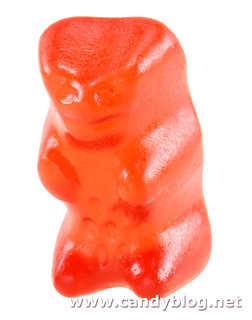

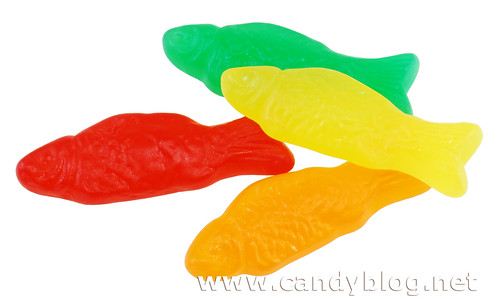
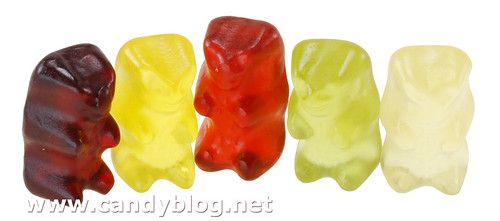
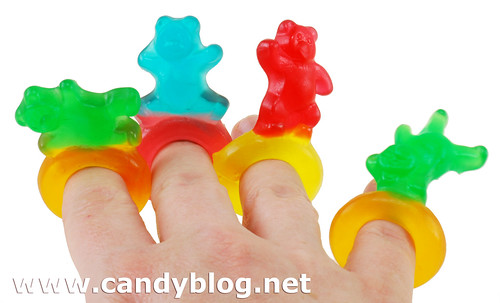
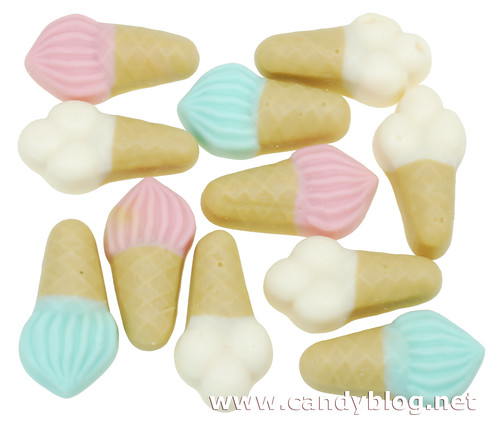
-

Comment by
david klein on 4/21/15 at 12:08 am #
-

Comment by
Jonny Guru on 4/21/15 at 10:55 am #
-

Comment by
Cybele on 4/21/15 at 3:35 pm #
-

Comment by
jes on 4/21/15 at 8:24 pm #
-

Comment by
SteveCarras on 4/21/15 at 8:36 pm #
-

Comment by
Emily on 4/29/15 at 7:12 pm #
-

Comment by
Devendra Jha on 8/24/15 at 9:26 pm #
Commenting is not available in this channel entry.The best explanation I have ever read….
cybele, this rocks. One question though- can a candy be a “jelly” if there’s gelatin in it? Or is it cut and dry-if it doesn’t rip apart clean, it’s a jelly AND doesn’t contain gelatin?
The reason I ask is that we come across tons of candies that fall in the jelly consistency camp, but I’m sure that not all of them are gelatin free. Or maybe they are and I’m not looking close enough. Anyhow, ...thoughts?
Jonny - I’d say that candies that fit the texture AND contain gelatin are gummis. Lots of candies have gelatin in them, like marshmallows, Starburst, etc, but that doesn’t make them gummis.
I think a family tree is in order at some point ... both gummis and jellies fit into the “sugar candy” branch, which would include nougats (the fluffy egg white kind) and marshmallows along with the compressed powders like SweeTarts or panned mints like Tic Tacs.
so swedish fish is jelly candy? (ive never had it before)
jes, Swedish Fish is jelly candy, kind of like being the earlier American prototype in my book of Gummis WITHOUT gelatin—-think gummis 1)without that Jello like substance and 2) ALL shaped like fish, and somewhat softer and by ONE company (Malaco Sweden) and you have your fish. I’m old enough that I grew up in the 60s when these were hitting our country.
Cybele, nice research work as always.(I love gelatin stuff..)
“If you stay, you can have anything you want to eat, even some sort of gelatin dish. It’s made from hooves, you know.” - Mr. Burns
I’m incapable of reading about *shudder* gelatin without thinking about this episode of The Simpsons. (As for me, I’m quite content to remain a vegan abstainer. More for the omnivores!)
Dear Cybele,
I am in Confectionery field since last 30 years. But could never find such satisfying answer for any queries.
I have one more for you.
Jelly candies are often deposited into a mould. But over period of time the the depositor hopper and pumps gets layered with thick mass of jelly.
Whats the reason for it.
Regards
D B Jha
Next entry: Pez Hedz - Hello Kitty
Previous entry: Jelly Belly Pancakes and Maple Syrup